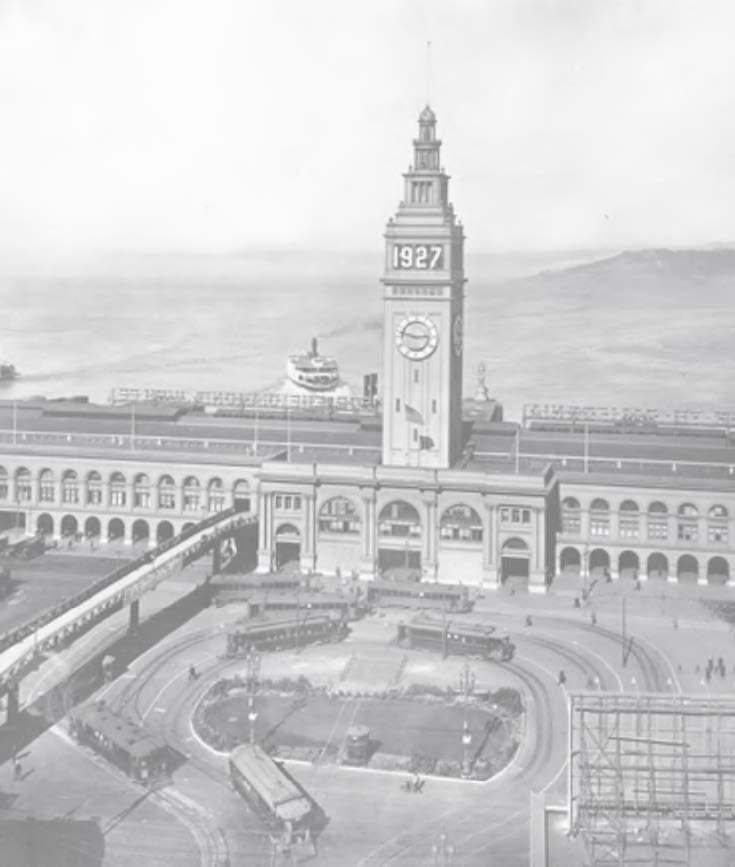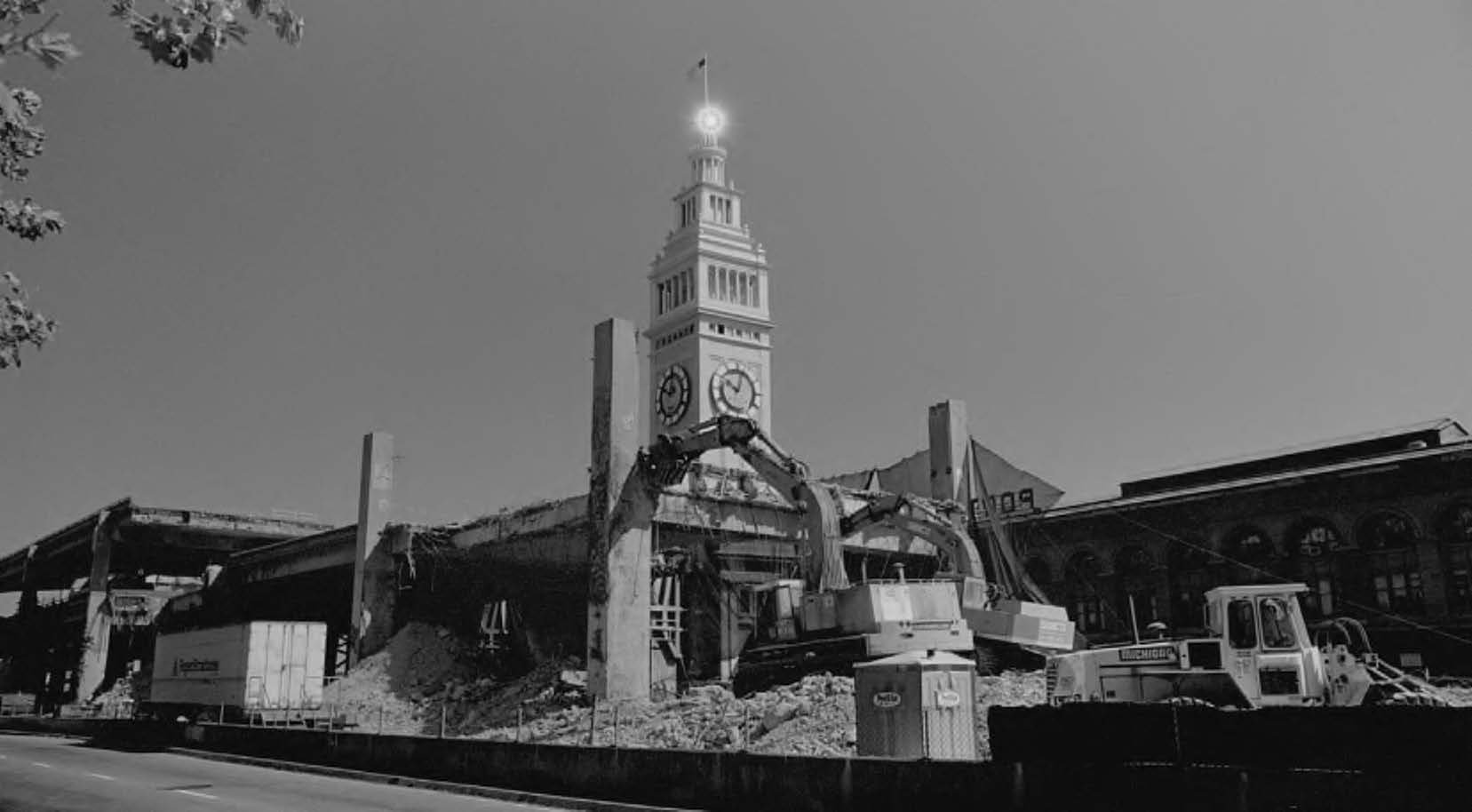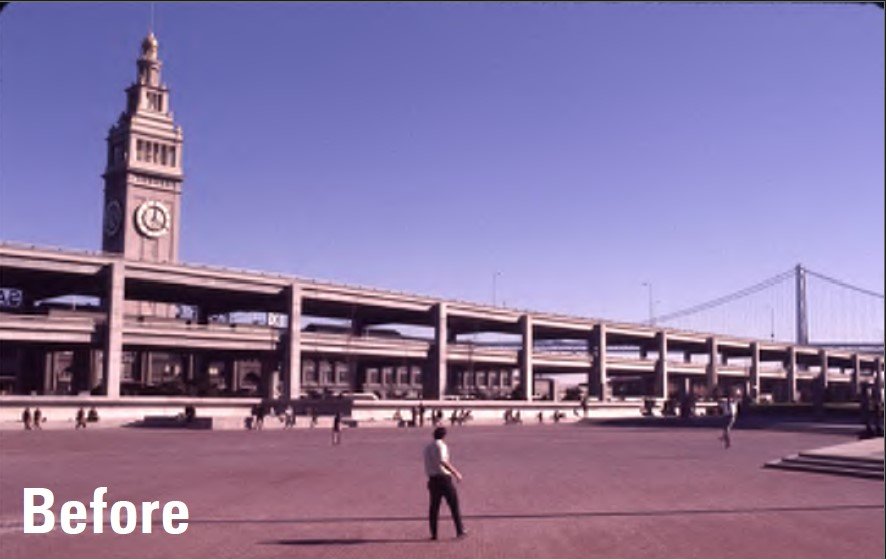
History
Embarcadero Plaza through the ages:
1898: The Ferry Building was originally completed as a terminal for ferries and a key transit hub. The San Francisco waterfront was primarily used for industrial and maritime purposes.
1959: The Embarcadero freeway was constructed.
1971: The Vaillancourt fountain was installed. The fountain was designed and installed in the context of its surroundings: to integrate the freeway and ramp into the context of the city and to counter the freeway noise.
1972: The Justin Herman Plaza was opened and named after M. Justin Herman, director of the SF Redevelopment Agency.
1989: The Loma Prieta earthquake shocked San Francisco. The Embarcadero Freeway sustained damage and was demolished.
1992: Demolition of the Embarcadero Freeway opened the waterfront and led to extensive rethinking of the area’s urban design.
1990-2003: The Ferry Building underwent a major seismic retrofit and restoration. The building was transformed into a public marketplace while preserving its historic architecture.
2011: Sue Bierman Park was opened next to Embarcadero Plaza.
How Embarcadero Plaza has changed:
The significant change in context altered the way the park and plaza interact with their surroundings. Prior to the demolition of the freeway, the design of the plaza was inward facing, bound by freeways, off ramps, and buildings. It acted as a barrier to the freeway and the Ferry Building. After the demolition of the freeway, the reimagining of the Ferry Building, and the opening of Sue Bierman Park, the plaza is less isolated, looking out into different areas of the city. The plaza now connects the downtown to the waterfront and surrounding areas.
While the plaza’s current layout encourages movement through the area, it does have some significant challenges that prevent the area from being the vibrant tourist destination that it could be. Having been under-maintained for decades, the plaza and the adjoining Sue Bierman park have settlement and drainage issues, and the old concrete retaining walls and berms obstruct access to the waterfront and Ferry Building, while also creating hidden areas for bad actors. This revitalization project aims to address these issues, while also making the park fully accessible, so that everyone is able to enjoy and utilize the plaza without limitation. We aim to turn Embarcadero Plaza into an inclusive, lively, and accessible park that will encourage people to gather, connect, and bask in a beautiful public space that represents San Francisco’s vibrant spirit.







